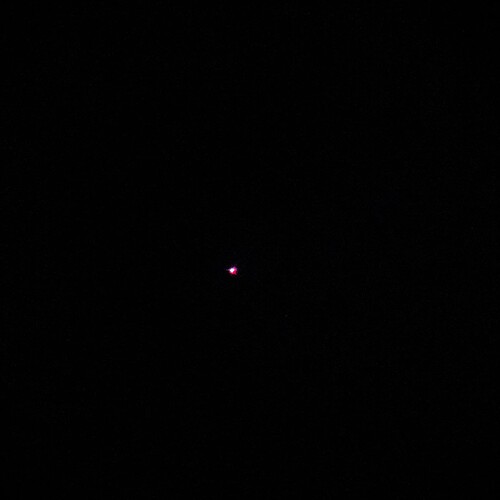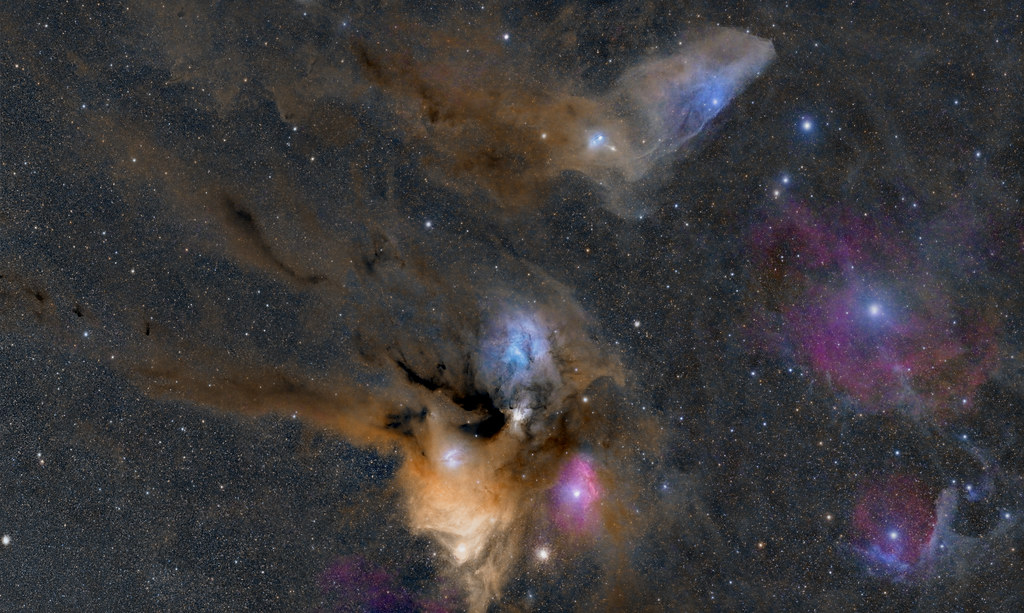So I was attempting to see Antares and the open cluster CR 302 (~1 deg separation) and at least part of the emission nebula Rho Ophiuchi complex. All I got using my UHC filter was the normally orange Antares start looking more like a red giant star. Any reason why the nebula didn’t show up? I used my Celestron C8 with a 16mm UWF eyepiece (125x mag) and my UHC filter.
Have you used this setup to capture emission nebulas previously? Here’s my best guess-- probably a combination of things:
-
Focal Length
Looks like magnification has you very zoomed in, so you didn’t have much nebula in the field of view. (That’s what it looked like when I checked the eyepiece/telescope in Stellarium, centered between Antares and C 302). The C8 has such a long focal length to begin with, you may get a lot more nebula in the image with a 40mm eye piece. -
Exposure time
Also, when you’re that zoomed in, you either need a very stable tracking mount or very short exposures to capture a sharp image. So if you go for short exposures, you would need to stack quite a few of them to see a relatively faint emission nebula (red color) or fainter reflection nebulas too (blue and white colors). -
Built-in camera filters
If you’re using a stock camera (DSLR, camera phone, etc.) to capture an emission nebula, you need a lot of exposure time, because those cameras have filters that block out a lot of the red light that makes up an emission nebula. So you need a lot of total exposure time, either with a few long exposures, or many short exposures. -
Light pollution?
Not sure where you shot this, but some fainter nebulas can get washed out in higher light pollution, to the point where they’re hard to capture even with a perfect setup. Your UHC filter might help a bit here, but the difference is relatively minor compared to shooting at a darker site without the filter.
Thanks Will, I’m located in Edmond and the bortle class is about 6 and the 1/2 moon was up. So you are probably rigjt on the light pollution and perhaps the eyepiece too. Ill try again this Tue night and I can go behind Mitch park where there is a large open field and bortle is about 5.
Most of Rho is a very faint reflection neb and dust, and the Ha emission is super faint.
To get anything close to Rho like this:
You’ll need to be at a very dark site and image very deep.
Sure thing Randy. I’ve never photographed the Rho area before, so I wasn’t sure how dim it is. But Andy’s confirmed my suspicions that it’s very dim. It’s probably going to be very difficult with a cell phone camera and eye piece from Bortle 5, if not bordering on impossible. Do give it a try, but know you’re going in on a challenge.
Here’s a video from Nico Carver that goes over shooting Orion Nebula with a cell phone and eyepiece. Unfortunately it sounds like the nebulosity in Rho is going to be nothing like Orion. Orion’s a special gem with how bright and easy it is to see & photograph. Looking forward to it coming back into the night sky!
Thanks for that Andy. I was going on the apparent magnitude of IC 4605 which is nearby being around 4.7 which is similar to Orion; no apparent magnitude of IC 4606 which is right next to Antares. Anyway, thanks for the that. Perhaps it’ll be better to try this at CRO instead of within Edmond!
I’m still a bit puzzled about how to properly gauge brightness of nebulae based on magnitude. Often the magnitude value makes it seem like they should be bright, but then they’re not.
I think one of the pieces of that puzzle is the brightness is spread across the whole area of the nebula. So if there are two nebulae of identical magnitude, and one is half the size of the other, the smaller nebula will appear 4 times brighter than the larger nebula (I think? Rather than 2x).
But then in your example, of Orion versus IC 4605, they are pretty close. Orion is 4.0 and IC 4605 is 4.78. Because of the logarithmic scale magnitudes use, that means Orion is almost exactly twice as bright-- but you’d think IC 4605 would still be plenty visible by telescope, since Orion is visible by eye. And Orion is much larger, which should make it more diffuse. Maybe the difference is related to HII nebulosity versus reflection nebulosity? These numbers appear to just be for HII, whereas Orion has a lot of reflect light too.
And comparing IC 4605 to the nearby IC 4606 (which doesn’t seem to have a magnitude rating available) in photographs, it looks like it should be similarly bright. Maybe being right next to Antares causes some problems with contrast that make it harder to see? I have a feeling the surrounding context of a nebula and its contrast against the background makes a big difference.
Would be glad to hear from anyone who has gotten their heads wrapped around how to properly use magnitude ratings of nebulae to gauge their anticipated brightness. Thanks!

